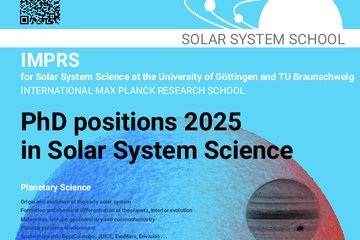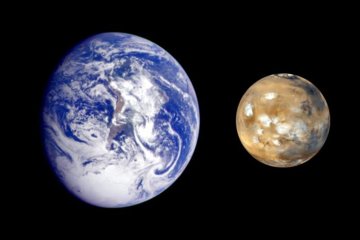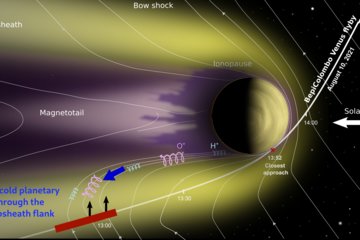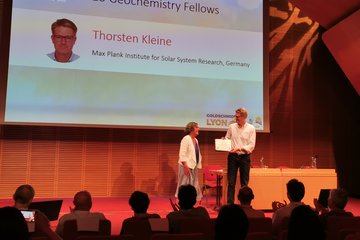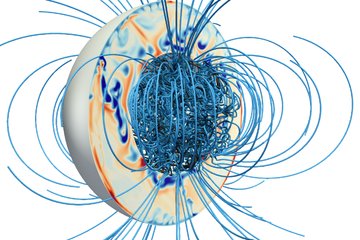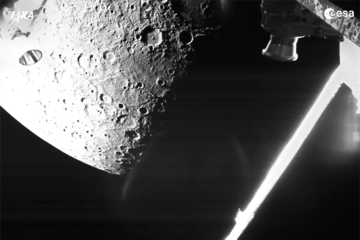Scientific data analysis models for SWI onboard the JUICE mission to Jupiter
The JUpiter ICy moons Explorer (JUICE) is the first large class mission of ESA’s Cosmic Vision 2025 program. JUICE was launched on 14 April 2023 from Kourou in French Guiana with the second last Ariane V rocket. The JUICE spacecraft carries 11 scientific instruments, led by Principal Investigators (PIs). The Submillimetre Wave Instrument (SWI) was developed by MPS with contributions from France, Japan, Poland, Sweden and Switzerland. SWI will mainly focus on three research topics: 1) The stratosphere of Jupiter, 2) the thin atmospheres/exospheres of the Galilean satellites and 3) their icy surfaces. With the launch this year, the project phase E started. According to the present schedule it will last until end of 2035 (end of the mission, with the spacecraft crashing on the surface of Ganymede). The spacecraft will insert into Jupiter’s orbit in summer 2031. The 8 years until orbit insertions will be used to develop scientific data analysis models, to better understand the instrument and to optimize instrument operations. Along with these plans we offer PhD position on two topics:
1. Instrumental
The idea behind this topic to dive as deeply as possible into the instrument characteristics in order to (i) figure out new scientific observation modes, (ii) develop new and increase the precision of calibration sequences, (iii) characterize the systematic instrument errors, (iv) develop strategies to quantify instrument errors and develop measures to separate them from statistical errors, (v) develop calibration pipelines for the measured spectra, (vi) develop radiative transfer and related inversion algorithms for local thermodynamical equilibrium (LTE) conditions. The microwave instruments calibration laboratory (MICL) plays an important role in the development and validation of these topics. It consists of a copy of the SWI flight instrument (the so-called flight spare) installed into a vacuum chamber simulating the environmental conditions in space (the Ground Reference Model, GRM). The MICL contains a set of modern, cutting edge equipment especially developed for the calibration of SWI. It is possible e.g. to calibrate the SWI receivers against the MICL spectrometers and vice versa the MICL receivers against the SWI spectrometers. Furthermore, the MICL allows to validate calibration pipelines as well as radiative transfer and retrieval algorithms on real data. The PhD candidate will benefit from working in a state-of-the-art environment with highly specialized scientists. Depending on the progress, results of the work may be tested during the Earth and Venus flybys between 2024-2026.
2. Non-local thermodynamic equilibrium (non-LTE) radiative transfer
In order to derive physical parameters about the thin atmospheres of the Galilean satellites from SWI spectral measurements, we model the radiation intensity associated with rotational transitions of optically active molecules that falls into the SWI wavelength range. Due to a small energy separation between the internal rotational states of molecules, the inelastic collisions within a volume are usually sufficient to keep the rotational populations in Boltzmann distribution, i.e. LTE, for even relatively low densities. In the LTE regime, the population distribution depends uniquely on the kinetic temperature. This is one of the advantages of submillimeter measurements, the possibility to target specific rotational lines typically of the ground vibrational state that are often safely assumed to be in LTE. In contrast, the vibrational populations of a molecule as a result of larger energy spacing among levels depart from LTE at somewhat high densities in atmospheric conditions typical of the Earth. Nevertheless, in the conditions of cometary comae, icy-moon atmospheres, and at high altitudes in planetary atmospheres the collisions are not usually frequent enough to keep even the rotational level populations according to the Boltzmann distribution and accurate non-LTE modelling needs to be applied. Generally speaking a non-LTE problem consist of two related parts: (1) the solution of the statistic equilibrium equations expressing all the processes populating and de-populating the different levels including radiation and (2) the solution of the radiative transfer equation (RTE) integrated over angle and frequency to produce the mean intensity at each atmospheric level, which in turn depends on level populations. The topic of the thesis is to improve existing non-LTE RTE approaches developed by the SWI team and head towards retrieval of atmospheric parameters from noisy spectra as we expect to get them from SWI observations.





